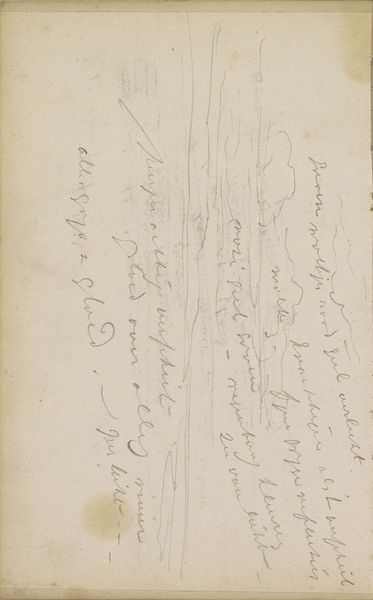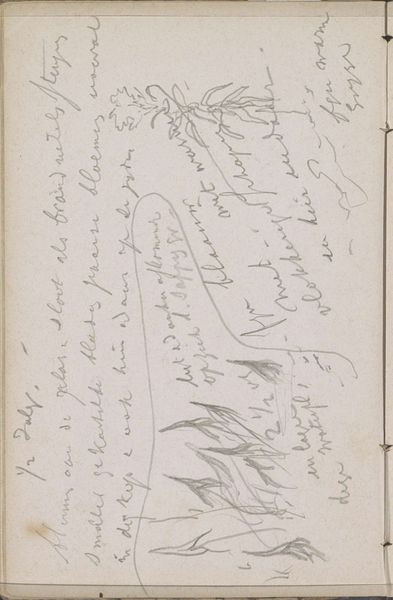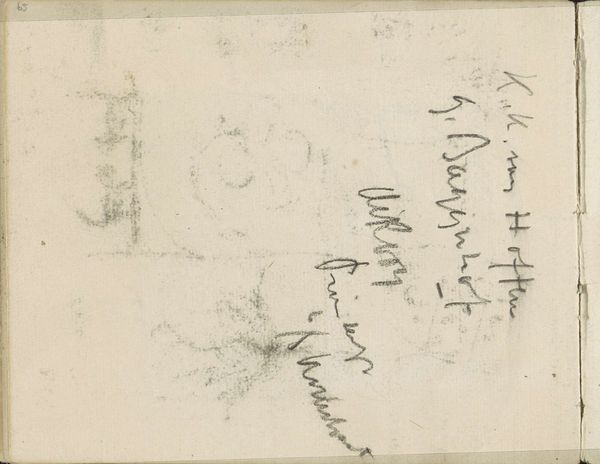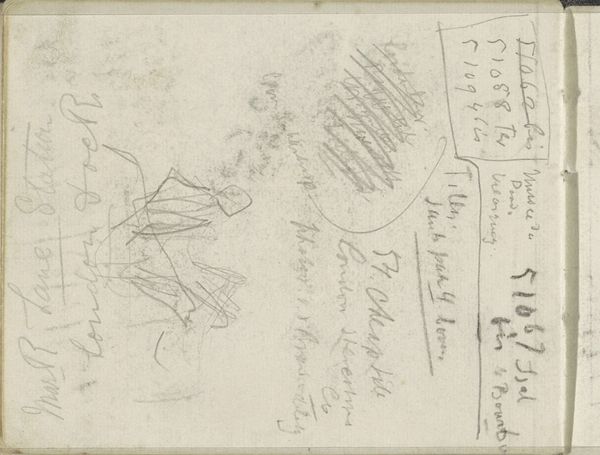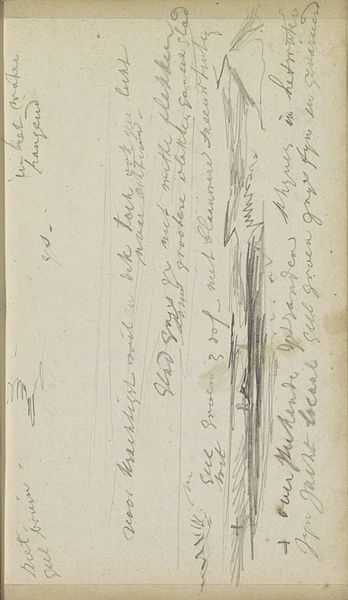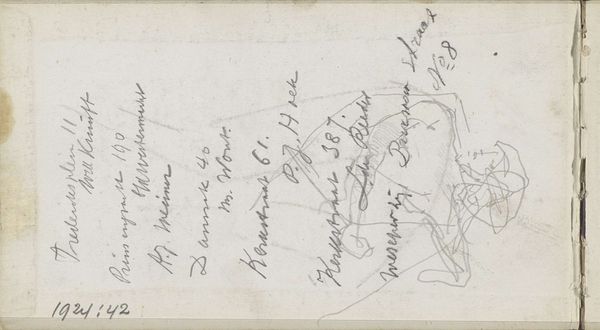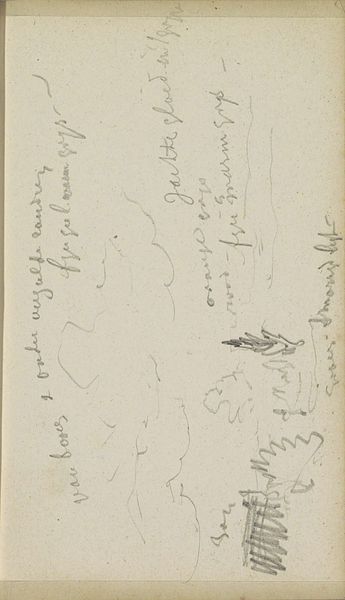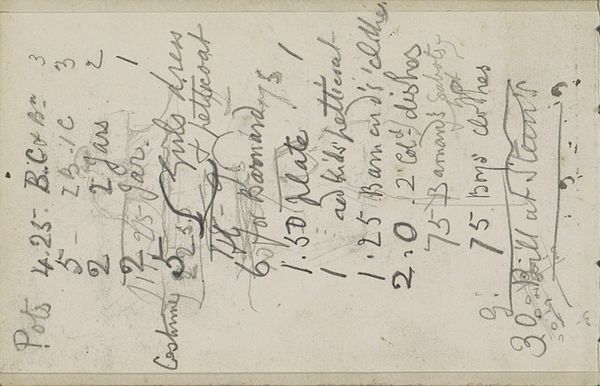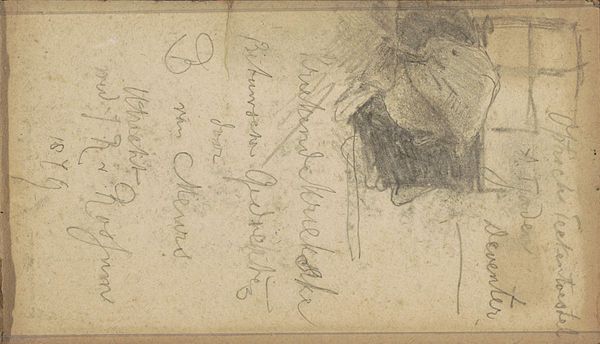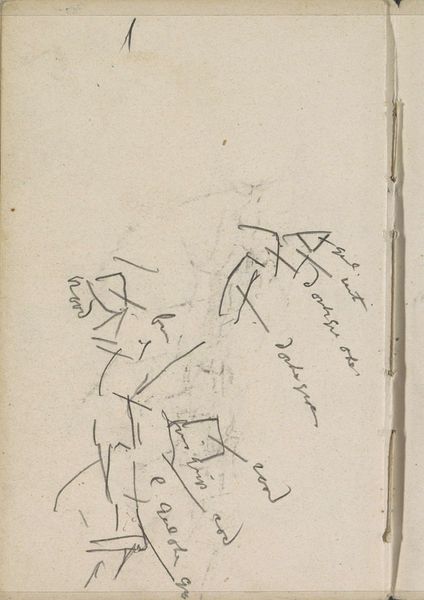
drawing, paper, pencil
#
drawing
#
toned paper
#
sketch book
#
incomplete sketchy
#
hand drawn type
#
paper
#
personal sketchbook
#
sketchwork
#
pen-ink sketch
#
pencil
#
pen work
#
sketchbook drawing
#
academic-art
#
sketchbook art
#
realism
Copyright: Rijks Museum: Open Domain
Curator: Looking at this drawing, "Gothic Church Window" by George Clausen from 1875, I'm immediately drawn to its fragmented feel. It looks like a quick study done in pencil on toned paper. Editor: It's interesting how raw and immediate it feels. It's clearly a working drawing, but that's precisely what captures my attention. You can see the artist grappling with form and light in real-time. The scribbled notes around the window form hint at the everyday economic realities surrounding its creation, "brown umber" perhaps referring to a material cost alongside seemingly random price listings? Curator: Absolutely. And think about the socio-political context. By the late 19th century, there's this fascination with revisiting and documenting Gothic architecture. This wasn’t just aesthetic; it's a deliberate move to connect with a specific historical and often idealized national past, feeding into emerging ideas about the role of architecture in crafting narratives of national identity. Editor: I agree that the gothic structure relates to notions of national identity at the time. Looking at the materiality, the accessibility of pencil and paper facilitated quick reproduction and broad distribution of such studies. Was this accessible material democratizing the elite and religious iconography or popularizing architectural rendering? Curator: Both valid possibilities! Consider that while this appears to be a personal sketch, the intention may have been to then translate it into something grander – a painting, or perhaps a more polished architectural drawing that could have been used for other public projects. The act of sketching then is integral to processes of material exchange as it's used for the creation of architectural monuments which contribute to society's social infrastructure. Editor: I find this study fascinating. What initially appears as a simple architectural fragment reveals so much about artistic processes, the materials and economic landscape available to George Clausen at the time and its potential in defining civic and national identities. Curator: I agree. The piece pushes us to see that a simple sketch in a book really functions as a potent cultural artifact that contains a vast record of its own historical production and possibilities for cultural memory.
Comments
No comments
Be the first to comment and join the conversation on the ultimate creative platform.
